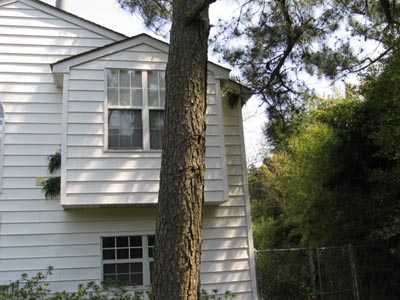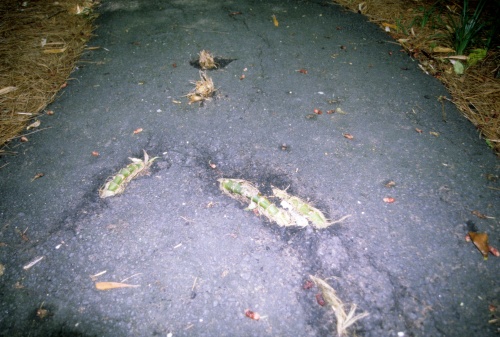





Technically, bamboo is a grass, but certainly not one you’d describe as a premier turf product. The sprouts that shoot up from the ground each spring can grow 12 inches per day. Common fishpole bamboo usually tops out at 15 feet high but it can grow taller if given sufficient water and fertilizer. The underground roots can travel 20 feet from the original clump without coming up for light.
Eliminating bamboo is a miserable task. In my opinion, it should never be sold unless the buyer attends a “Responsible Bamboo Ownership” class.
If you simply want to control a bamboo clump (i.e. prevent it from running all over your yard), a barrier is best. Dig a trench 24 inches deep completely around the clump and insert 24 inch wide aluminum flashing edgewise in the slit. It is best to leave two inches of flashing above ground so the bamboo rhizomes (roots) don’t attempt to climb over the barrier. Overlap the ends of the aluminum by 24 inches.
You can also buy commercial bamboo barriers made of rubber, such as the products from this company.
If you have decided that not a speck of bamboo should remain in your yard, you have a three year task before you. The first step is to chop down all of the bamboo canes to ground level now. When sprouts appear in April, spray each one thoroughly with glyphosate (click for sources). As other sprouts come up, give them the same treatment.
If you don’t have a herbicide handy, just clip the sprout or kick it over at the soil line.
Your goal is to never allow a green leaf of bamboo to survive more than a day or two on your property for three years.
With vigilance and diligence, you can say “bye-bye” to bamboo for good.
Good bamboo control advice from a grower
American Bamboo Society
Growing Bamboo in Georgia

bamboo from the property line crept underground to the house, sprouted next to the foundation and grew under the siding until it emerged 10′ higher up the house

bamboo emerging through asphalt
Copyright © www.100flowers.win Botanic Garden All Rights Reserved